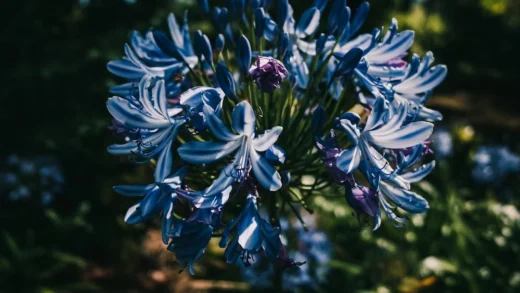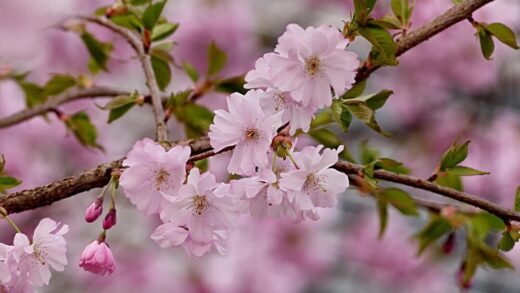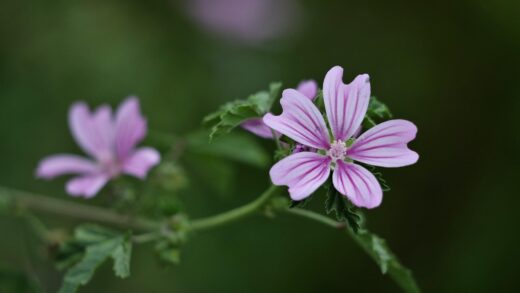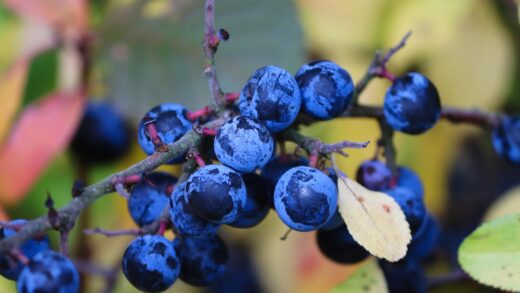The single most critical environmental factor dictating the health, vigor, and appearance of dusty miller is its exposure to light. This plant’s very identity is tied to the intense, silvery-white sheen of its foliage, a characteristic that is a direct response to and a defense against bright, direct sunlight. To cultivate dusty miller successfully and to achieve its most brilliant coloration, providing it with an abundance of light is not merely a suggestion but an absolute requirement. Understanding the nuances of its light needs is the key to unlocking its full ornamental potential in any garden design.
Dusty miller is a classic full-sun plant, meaning it requires a minimum of six to eight hours of direct, unfiltered sunlight each day to truly thrive. Its origins in the open, sun-drenched landscapes of the Mediterranean region have hardwired it to perform best under high-light conditions. When provided with this level of sun exposure, the plant responds by producing a dense, compact habit and its most intensely silver leaves. The bright light stimulates the production of the fine, downy hairs, or trichomes, that cover the leaves and give the plant its characteristic color and texture.
The silvery foliage is more than just an aesthetic feature; it is a remarkable evolutionary adaptation. The light-colored, reflective surface of the hairs bounces a significant portion of the intense solar radiation away from the leaf tissue. This helps to prevent the leaves from overheating and reduces water loss through transpiration, making the plant exceptionally well-suited to hot, dry climates. In essence, the more sun the plant receives, the more it leans into this defensive, and beautiful, silvery characteristic.
In situations where dusty miller is planted in partial shade or in a location that receives less than six hours of direct sun, the consequences are quite noticeable. The plant will struggle to maintain its compact form, often becoming “leggy” as it stretches its stems in an attempt to reach for more light. This results in a sparse, open, and generally unattractive plant structure. The reduced light intensity also leads to a significant change in foliage color, with the leaves appearing more gray-green than silver, thereby losing their most prized attribute.
Therefore, when selecting a planting location, a thorough assessment of the available sunlight is paramount. Observe the potential spot throughout the day to track how the sun moves across the area. A south-facing or west-facing exposure is typically ideal, as these locations receive the most prolonged and intense sunlight. Avoid planting dusty miller near large trees, buildings, or other structures that will cast significant shadows during the day. Prioritizing its need for sun above all else will set the stage for a stunning and healthy display.
More articles on this topic
The role of full sun
Full sun is the cornerstone of dusty miller’s vitality. For a plant to be classified as a “full sun” specimen, it must receive at least six hours of direct, unobstructed sunlight daily. For dusty miller, meeting this minimum is crucial, but exceeding it is often even better. Eight or more hours of sun will promote the most robust growth and the most striking silver coloration imaginable. This constant exposure to bright light fuels the process of photosynthesis, providing the energy the plant needs for all of its metabolic functions, from root development to leaf production.
The intensity of the sunlight is just as important as the duration. The strong, direct rays of the sun are what trigger the plant’s physiological response to produce the dense covering of reflective trichomes. In lower light, this response is muted, and the plant invests more energy in producing chlorophyll, the green pigment responsible for photosynthesis. This is why shade-grown plants appear greener; they are trying to maximize their ability to capture the limited available light. A sun-drenched location ensures the plant can “afford” to produce its silvery coating without compromising its energy production.
In the garden, this love of sun makes dusty miller an incredibly versatile plant for the hottest, most challenging spots. It is an excellent choice for south-facing borders, rock gardens, gravel beds, and sunny patio containers where other, less heat-tolerant plants might scorch or fade. Its reflective foliage not only protects the plant itself but can also have a cooling effect on the surrounding soil and a visually cooling effect in a “hot” color-themed garden bed. It thrives in the kind of intense light that would cause many other plants to wilt.
When planning a garden bed, it is important to consider the mature size of neighboring plants. A location that is in full sun when the dusty miller is first planted may become shadier as taller perennials or shrubs grow and fill in around it. To avoid this, place dusty miller at the front of the border or alongside other low-growing, sun-loving plants. This strategic placement ensures that it will continue to receive the unimpeded sunlight it requires throughout the growing season and in subsequent years if grown as a perennial.
More articles on this topic
Consequences of insufficient light
Planting dusty miller in a location with insufficient light is one of the most common reasons for its failure to thrive. The signs of light deprivation are distinct and easy to recognize. The most immediate and noticeable effect is on the plant’s growth habit. Instead of forming a neat, compact mound, the plant will become etiolated, or “leggy.” This means the spaces between the leaves on the stems, known as internodes, will become abnormally long as the plant stretches desperately towards the nearest light source. This results in a weak, floppy, and sparse appearance.
The second major consequence is the loss of its signature foliage color. The silvery-white appearance is a direct result of high light levels. In shade, the plant reduces the production of the protective trichomes and increases the production of chlorophyll in an attempt to maximize its photosynthetic efficiency in the low-light conditions. As a result, the leaves will revert to a dull gray-green color. This fundamentally changes the character of the plant, eliminating the very trait for which it is most valued in garden design.
A plant that is weakened by a lack of sunlight is also significantly more susceptible to a range of secondary problems. The soft, stretched stems are more prone to breaking and physical damage. Furthermore, the lack of direct sun and the reduced air circulation that often accompanies shady spots create a more humid microclimate around the plant. This moist environment is a breeding ground for fungal diseases such as powdery mildew and botrytis blight. A light-starved plant simply does not have the energy reserves to effectively defend itself against these pathogens.
In short, while dusty miller may survive for a time in a partially shaded location, it will not thrive. It will be a pale imitation of its potential self, both in form and in color. If you observe these symptoms in your own plants, the only effective remedy is to move them to a sunnier location. Carefully transplanting them to a spot that meets their light requirements will usually result in a dramatic improvement in their health and appearance, with new growth appearing more compact and silvery.
Light requirements for seedlings and propagation
When starting dusty miller from seed or propagating it from cuttings, the light requirements are slightly more nuanced than for established garden plants. The seeds themselves require light for germination, which is why they should be sown on the surface of the soil and not covered. Once the seeds have germinated and the tiny seedlings have emerged, they need immediate access to a strong light source. Insufficient light at this critical early stage will result in weak, spindly seedlings that are prone to damping-off disease.
For indoor seed starting, a sunny, south-facing windowsill can be adequate, but it is often not ideal. The light from a window is unidirectional, causing the seedlings to lean towards the glass, and the intensity can vary greatly depending on the weather. A far more reliable method for providing consistent, high-quality light is to use artificial grow lights. Standard fluorescent or LED shop lights suspended just a few inches above the seedlings for 14 to 16 hours per day will provide the intense, direct light they need to grow strong, straight, and compact.
Similarly, when rooting cuttings, bright but indirect light is initially preferred. Placing newly taken cuttings in direct, intense sun can cause them to lose too much moisture through their leaves before they have had a chance to develop roots, leading them to wilt and fail. A location that is bright but out of the direct path of the sun, or under grow lights, provides the ideal conditions for root formation. Once the cuttings have developed a healthy root system, they can be gradually acclimated to more direct sunlight.
The process of hardening off is a critical light-management technique for any young plant that has been started indoors. This involves gradually exposing the seedlings or rooted cuttings to increasing amounts of direct outdoor sunlight over a period of one to two weeks. This slow acclimatization allows the delicate leaf tissues to adapt to the much higher intensity of UV radiation outdoors, preventing sunburn and shock. Rushing this process can severely damage or kill the young plants, undoing all the effort of propagation.
Special considerations and tips
While the rule is “full sun,” there is a minor exception in the hottest and most arid climates, such as the low desert regions of the southwestern United States. In these extreme environments, where summer sun can be exceptionally intense and temperatures soar, dusty miller can sometimes benefit from a small amount of shade during the hottest part of the afternoon. This can help to reduce heat stress and prevent the foliage from scorching. However, even in these climates, it still needs at least six to eight hours of direct sun in the morning and early part of the day.
When grown in containers, the importance of light is just as high, if not higher. Potted plants are entirely dependent on their placement for their light exposure. A container placed on a shady porch or under an overhang will exhibit all the negative symptoms of light deprivation. To ensure success, place containers in the sunniest parts of your patio, deck, or balcony. Remember that containers can be moved throughout the day or season to “chase the sun” if necessary, a flexibility not afforded to in-ground plants.
The reflective quality of dusty miller’s foliage can be used as a strategic tool in garden design. When placed next to dark-leaved plants or brightly colored flowers, the silvery leaves create a stunning contrast that makes the other colors appear more vibrant and saturated. In moonlight or at dusk, the pale foliage seems to glow, adding an ethereal quality to the evening garden. Understanding this interplay with light allows you to use the plant not just as a specimen but as a design element that enhances the entire composition.
Finally, remember that the plant’s health is a holistic equation where light is one, albeit the most important, variable. A plant receiving adequate sun but suffering from waterlogged soil will still fail. Optimal light exposure allows the plant to make the most of good soil, proper watering, and adequate nutrition. It is the enabling factor that allows all other aspects of its care to come together, resulting in a truly beautiful and resilient garden plant.


















